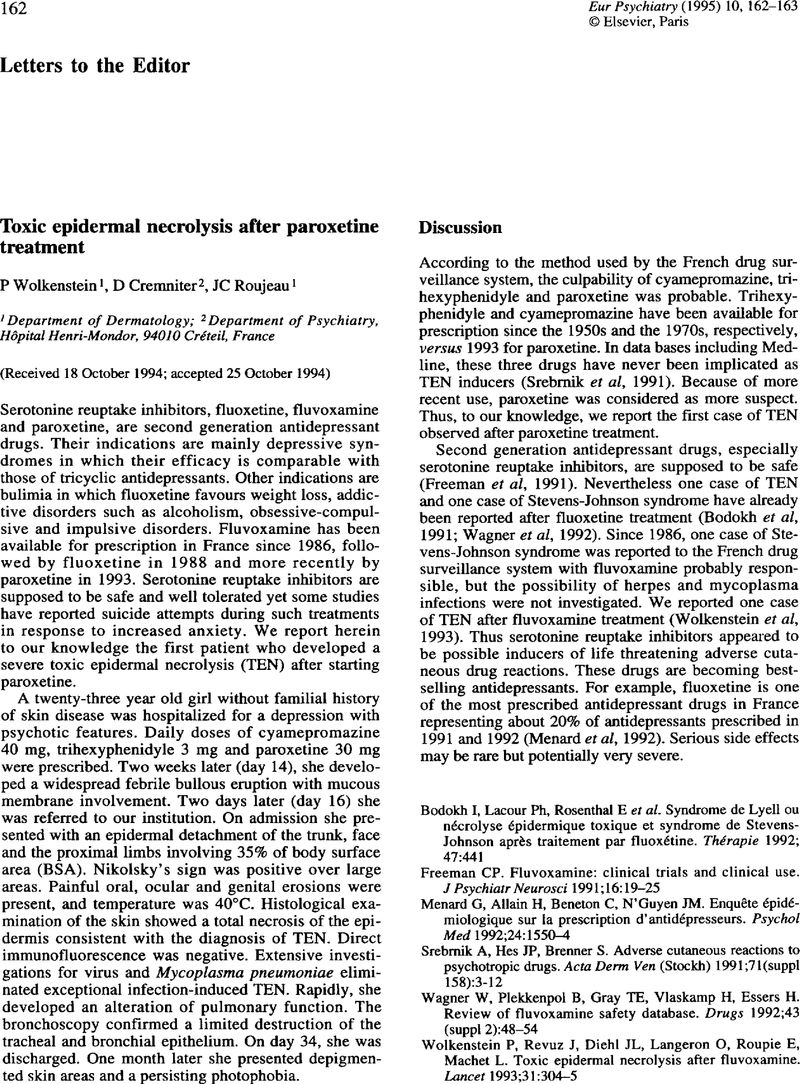Crossref Citations
This article has been cited by the following publications. This list is generated based on data provided by Crossref.
Wolkenstein, P.
Cremniter, D.
and
Roujeau, J. C.
1995.
Necrólisis epidérmica tóxica después de tratamiento con paroxetina.
European psychiatry (Ed. Española),
Vol. 2,
Issue. 5,
p.
335.
Tudela, Emilie
Villier, Céline
and
Mallaret, Michel
2009.
Toxic epidermal necrolysis associated with paroxetine.
General Hospital Psychiatry,
Vol. 31,
Issue. 3,
p.
297.
Calvet, Pauline
Clément, Jean-Pierre
Rouzaud-Laborde, Charlotte
and
Calvet, Benjamin
2017.
Traitement par psychotropes, doit-on se méfier des réactions cutanées ?.
Annales Médico-psychologiques, revue psychiatrique,
Vol. 175,
Issue. 6,
p.
583.
Masuka, Josiah Tatenda
Muzopambwa, Garikai
Khoza, Star
and
Chibanda, Dixon
2019.
An Interesting Case of Carbamazepine-Induced Stevens–Johnson Syndrome.
Drug Safety - Case Reports,
Vol. 6,
Issue. 1,




Comments
No Comments have been published for this article.